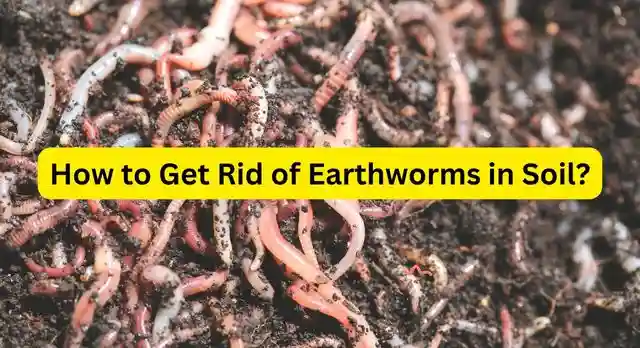How to Get Rid of Earthworms in Soil? Eliminate Them and Restore Your Garden’s Balance
Earthworms are often praised for their beneficial role in soil health and gardening. These small, wriggling creatures play a crucial role in breaking down organic matter, aerating the soil, and improving nutrient availability. However, there are situations where earthworm populations can become excessive, leading to imbalances in soil conditions and potential harm to plant roots.
In such cases, it becomes necessary to control and manage earthworm populations to restore a healthy balance in your garden. In this article, we will explore various effective methods to get rid of earthworms in soil while maintaining ecological balance and promoting sustainable gardening practices.

How to Get Rid of Earthworms in Soil?
Here is a step that you must follow to remove earthworms from soil.
- Prevention is Key
- Natural Repellents and Amendments
- Physical Removal
- Chemical Control (As a Last Resort)
1. Prevention is Key
Preventing excessive earthworm populations is often the best approach. By creating an environment less favorable for earthworms, you can minimize their numbers without resorting to harsh methods. Here are some prevention strategies:
- Avoid over-watering: Earthworms thrive in moist soil, so be mindful of the watering frequency and quantity. Ensure proper drainage to avoid waterlogged conditions that attract earthworms.
- Reduce organic matter: Earthworms feed on organic matter, so limiting their food source can help control their populations. Regularly remove fallen leaves, grass clippings, and other decaying materials from the soil surface.
- Use raised beds or containers: Growing plants in raised beds or containers with controlled soil mixtures can restrict earthworm access and prevent their excessive population growth.
2. Natural Repellents and Amendments
If you’re looking for organic methods to deter earthworms, consider the following options:
- Spicy deterrents: Sprinkling cayenne pepper, garlic powder, or powdered mustard in the soil can discourage earthworms from burrowing. Reapply after rainfall or irrigation.
- Acidic amendments: Adding materials with high acidity, such as coffee grounds, citrus peels, or vinegar diluted with water, can create an unfavorable environment for earthworms. Remember to use these amendments sparingly to avoid negatively impacting other soil organisms.
3. Physical Removal
In cases where earthworm populations have already become excessive, physical removal methods can be employed. Here are a few techniques to consider:
- Handpicking: For smaller garden areas, manually removing earthworms by hand can be effective. Ensure you’re wearing gloves to protect your hands and transfer the collected earthworms to a designated area away from your garden.
- Light trapping: Earthworms are sensitive to light and can be lured to the surface by placing wet cardboard or burlap sacks on the soil overnight. In the morning, lift the traps and remove the accumulated earthworms.
4. Chemical Control (As a Last Resort)
Chemical control methods should be considered only when all other options have been exhausted. Always follow the instructions on the product label and exercise caution to minimize environmental impact. Seek advice from professionals before resorting to chemical treatments.
Key Takeaway
Maintaining a balance between earthworm populations and a healthy garden is essential for sustainable gardening practices. While earthworms are generally beneficial, excessive populations can cause problems. Remember these key takeaways when dealing with earthworms in soil:
- Prevention is the first line of defense: Create an environment less favorable for earthworms through proper watering, removing excess organic matter, and using raised beds or containers.
- Organic deterrents can be effective: Spicy ingredients and acidic amendments can discourage earthworms without harming the environment.
- Physical removal methods: Handpicking and light trapping can help control earthworm populations in smaller garden areas.
- Chemical control should be a last resort: If all other methods fail, consult professionals and use chemical treatments cautiously.
By employing these methods, you can effectively manage earthworm populations and strike a balance between their beneficial contributions and your garden’s needs.
Related Post
How to get rid of earthworms in potted plants? Solutions and Prevention Tips
